By James Tatum, CSG policy analyst
On April 13, two groups of states announced their intentions to coordinate their responses to economic shutdowns caused by COVID-19. On the west coast, the governors of California, Oregon and Washington published a press release indicating that they would identify “clear indicators for communities to restart public life and business[1].” In the northeast, Connecticut, Delaware, New Jersey, New York, Pennsylvania, Rhode Island and Massachusetts announced a similar agreement to create a framework of guidelines to “gradually lift the states’ stay at home orders while minimizing the risk of increased spread of the virus[2].” On Thursday, April 16, Illinois, Indiana, Kentucky, Michigan, Minnesota, Ohio and Wisconsin issued a press release outlining their goals for a regional economic plan during the current pandemic.
Northeastern Pact (CN, DE, NJ, NY, PA, RI, MA)
The Northeastern pact plans to convene a multi-state council comprised of a health expert, an economic development expert and the chiefs of staff from each state included in the pact. These participants will develop guidelines to slowly reopen the economies of the participating states to avoid a second wave of COVID-19 infections. On May 3, the Northeastern pact governors announced the development of a regional supply chain for personal protective equipment, medical equipment, and testing supplies. The seven states in the pact will “work together to identify the entire region’s needs for these products, aggregate demand among the states, reduce costs and stabilize the supply chain.[3]” The states will develop a plan to allocate medical supply inventories so they will be prepared for a possible second wave of COVID-19 infections, and coordinated policies will be put in place for supply distribution to first responders. Connecticut Gov. Ned Lamont said, “One thing that’s undeniable is that this virus does not stop at the border of any county, state or country, but the impact is the same when it comes to our respective economies and healthcare systems. Working as a regional coalition to make the right decisions will lead to the best public health results for all of our residents. We must solve these problems together[4].”
After plans for medical supply distribution are in place, the Northeastern pact will identify suppliers within the U.S. who can meet the demand of the entire region for the next three months. New York Governor Andrew Cuomo acknowledged states in the region have already coordinated efforts to combat the disease through uniform social distancing and density reduction strategies, and they should continue to coordinate through recovery efforts[5]. On May 3, Cuomo stated, “We’re going to form a regional state purchasing consortium with our seven northeast partner states to increase our market power when we’re buying supplies and help us actually get the equipment at a better price. I want to thank our neighboring states for their ongoing support, generosity and regional coordination on these important efforts.[6]”
Many of states participating have cooperated on a regional basis before. One of the oldest interstate compacts still in existence is the Port Authority of New York and New Jersey. Except for Pennsylvania, all of the in the states in the Northeastern pact are members of Regional Greenhouse Gas Initiative (RGGI). Participating states agreed to cap CO2 emissions and established a market where they auction emission allowances and invest earnings in consumer benefit programs.
Midwestern Pact (IL, IN, KY, OH, MI, MN, WI)
Less than 24 hours after Kentucky Gov. Andy Beshear announced that the state was working in conjunction with neighboring Indiana and Ohio, it was announced that the three states would join with Michigan, Wisconsin, Minnesota and Illinois to coordinate efforts to reopen state economies. In a joint press release, the governors said, “we recognize that our economies are all reliant on each other, and we must work together to safely reopen them so hardworking people can get back to work and businesses can get back on their feet[7].” The plan to reopen the regions economies will prioritize workers’ health and decisions would be made based on “facts, science, and recommendations from experts in health care, business, labor and education[8].” The rate of reopening will be based on the following four factors:
- Sustained control of the rate of new infections and hospitalizations.
- Enhanced ability to test and trace.
- Sufficient health care capacity to handle resurgence.
- And best practices for social distancing in the workplace.[9]
Western Pact (CA, OR, WA)
California, Oregon and Washington issued a joint press release that emphasized that the three west coast states are home to one in six Americans and serve as a major trade and travel hub. Recognizing their role as a “gateway to the rest of the world[10],” the states are basing decisions to reopen on health outcomes and data. Modifications to stay at home orders will be informed by the impact of COVID-19 on communities, the health impact of measures to control the spread of the disease, and the capacity of health care systems to care for anyone in need of medical attention. “We all want to get back to work and return to normal life as quickly as possible,” said Oregon Gov. Kate Brown. “But the truth is: the best path forward is a cautious one — a path that proceeds gradually, carefully and incrementally. A path that relies on science and facts to determine each step forward[11].”
Each state has individual plans for reopening their economies, but metrics will be developed to coordinate as a region. The states have agreed on a set of four goals to control the virus, including:
- Protecting vulnerable populations at risk for severe disease if infected. This includes a concerted effort to prevent and fight outbreaks in nursing homes and other long-term care facilities.
- Ensuring an ability to care for those who may become sick with COVID-19 and other conditions. This will require adequate hospital surge capacity and supplies of personal protective equipment.
- Mitigating the non-direct COVID-19 health impacts, particularly on disadvantaged communities.
- Protecting the general public by ensuring any successful lifting of interventions includes the development of a system for testing, tracking and isolating. The states will work together to share best practices.[12]
Much like the Northeastern pact, California, Oregon and Washington have a history of regional cooperation. The Pacific Coast Collaborative (PCC) fosters collaboration between the three states, British Colombia, and major metropolitan cities therein. Since its formation in 2008, the PCC has focused on economic growth, reducing greenhouse gas emissions, protecting natural resources, and ensuring that prosperity is shared by all residents. The Western Governors’ Association (WGA) fosters cooperation among twenty-two U.S. states and territories and three Canadian provinces. The governors convene yearly to develop voluntary initiatives over issues such as mining, water management and workforce development.
Support from Research
A 2007 report by the Federal Reserve Bank of St. Louis[13] used data from the 1928 Flu Pandemic to study the effect of coordinated action, health care capacity and the economic effect of quarantines. The study found that health care capacity must be preserved to provide any benefit against a pandemic, and if health care workers succumb to the disease and facilities are overburdened, the duration and severity of the pandemic will increase. Furthermore, partial or local quarantines would not prevent the spread of disease and could still hurt businesses in the short run, and the only way to prevent spread is to institute complete quarantines.
A study focusing on the economic effects of public health interventions during the 1918 Flu Pandemic[14] was published on April 10, 2020. The report looked at the effect of non-pharmaceutical interventions (NPI) such as social distancing, quarantines, restricted business hours, and the closure of schools, theaters and churches. The authors found that pandemics have a severe negative effect on economic activity, but cities that instituted earlier and stricter NPI’s actually saw economic growth after the pandemic ended. Reacting to a pandemic 10 days earlier than another city showed significant increases in manufacturing employment, output, and bank assets even one year after the initial outbreak. While the 1918 Flu may be more deadly that COVID-19, strict NPI’s do not harm long-term economic conditions, and may contribute to growth when the situation returns to normal.
[2] Northeast joint press release
[3] DE Governor Press Release – May 3rd
[4] Northeast joint press release
[5] Northeast joint press release
[6] DE Governor Press Release – May 3rd
[7] Midwest joint press release
[8] Midwest joint press release
[9] Midwest joint press release
[13] Economic Effects of the 1918 Influenza Pandemic: Implications for a Modern-day Pandemic
[14] Pandemics Depress the Economy, Public Health Interventions Do Not: Evidence from the 1918 Flu

